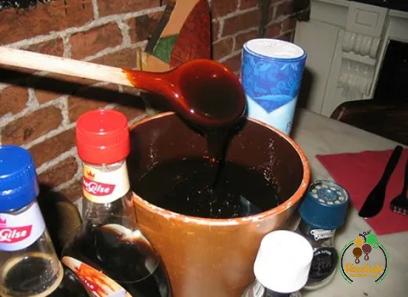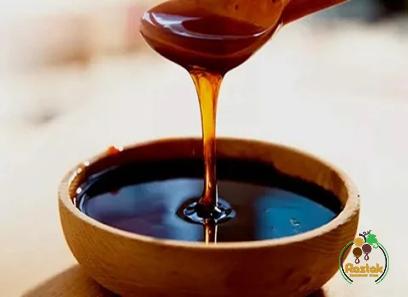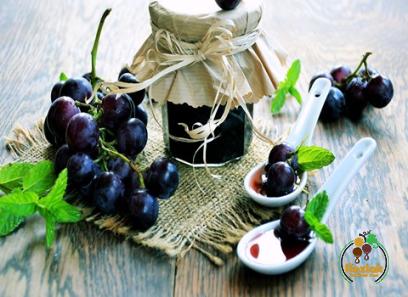Grape juice has long been consumed for its refreshing taste and various health benefits. With two popular options available in the market, white grape juice and red grape juice, it becomes important to understand their differences and unique qualities. In this article, we will delve into the characteristics, benefits, and similarities of white grape juice and red grape juice, helping consumers make an informed choice. Flavor and Appearance: White Grape Juice: White grape juice is known for its mild, crisp, and slightly sweet flavor. It has a clear, pale yellow color, resembling the color of white wine. Its taste is often described as refreshing, citrusy, and subtle.

.
 Red Grape Juice: On the other hand, red grape juice carries a bold and robust flavor profile. It possesses a deep red or purple hue, reminiscent of red wine. With notes of ripe berries and a slightly tangy undertone, red grape juice offers a richer taste experience. Nutritional Composition: Both white grape juice and red grape juice are excellent sources of essential vitamins and minerals. However, slight variations in their nutritional composition are worth considering. White Grape Juice: White grape juice is a good source of vitamin C and potassium. It is also known for its high antioxidant content, which helps neutralize harmful free radicals in the body.
Red Grape Juice: On the other hand, red grape juice carries a bold and robust flavor profile. It possesses a deep red or purple hue, reminiscent of red wine. With notes of ripe berries and a slightly tangy undertone, red grape juice offers a richer taste experience. Nutritional Composition: Both white grape juice and red grape juice are excellent sources of essential vitamins and minerals. However, slight variations in their nutritional composition are worth considering. White Grape Juice: White grape juice is a good source of vitamin C and potassium. It is also known for its high antioxidant content, which helps neutralize harmful free radicals in the body.
..
 With a lower natural sugar content compared to red grape juice, white grape juice may be a preferred choice for individuals watching their sugar intake. Red Grape Juice: Red grape juice boasts a higher concentration of antioxidants due to the presence of pigments called anthocyanins, which give the juice its vibrant color. These antioxidants are known to promote heart health and reduce the risk of certain chronic diseases. However, red grape juice typically contains a higher amount of natural sugars compared to its white counterpart. Health Benefits: Both white and red grape juice offer a range of health benefits, but thanks to their unique compositions, some advantages stand out. White Grape Juice: The antioxidants present in white grape juice contribute to its anti-inflammatory properties, and its vitamin C content boosts the immune system. Being lower in sugar, white grape juice may appeal to those with diabetes or individuals looking for a healthier option.
With a lower natural sugar content compared to red grape juice, white grape juice may be a preferred choice for individuals watching their sugar intake. Red Grape Juice: Red grape juice boasts a higher concentration of antioxidants due to the presence of pigments called anthocyanins, which give the juice its vibrant color. These antioxidants are known to promote heart health and reduce the risk of certain chronic diseases. However, red grape juice typically contains a higher amount of natural sugars compared to its white counterpart. Health Benefits: Both white and red grape juice offer a range of health benefits, but thanks to their unique compositions, some advantages stand out. White Grape Juice: The antioxidants present in white grape juice contribute to its anti-inflammatory properties, and its vitamin C content boosts the immune system. Being lower in sugar, white grape juice may appeal to those with diabetes or individuals looking for a healthier option.
…
 Red Grape Juice: The higher concentration of antioxidants found in red grape juice is known for its potential heart-protective effects. It has been linked to reducing blood pressure, improving blood flow, and preventing blood clots. Additionally, red grape juice contains natural compounds that support cognitive function and may help slow down the aging process. Culinary Uses: White and red grape juices offer diverse options for culinary applications and pairings. White Grape Juice: Due to its milder flavor profile, white grape juice is often used in cooking and baking. It can be incorporated into various recipes, such as marinades, sauces, desserts, and cocktails. Additionally, it serves as a refreshing base for mocktails and mixed drinks. Red Grape Juice: With its bold flavor and rich color, red grape juice is commonly consumed on its own or as part of a charcuterie board. It also serves as an ingredient in desserts, vinaigrettes, and glazes for savory dishes. Red grape juice can be an excellent substitute for red wine in recipes that require a non-alcoholic alternative. Conclusion: In the debate of white grape juice vs. red grape juice, both have their distinct flavor profiles, nutritional compositions, and potential health benefits. White grape juice appeals to those who prefer a milder taste and lower sugar content, while red grape juice offers a bolder flavor profile and higher antioxidant levels. The choice ultimately depends on individual preferences, dietary considerations, and specific health goals. Whichever option you choose, incorporating grape juice into your daily routine can be a delicious and healthy addition.
Red Grape Juice: The higher concentration of antioxidants found in red grape juice is known for its potential heart-protective effects. It has been linked to reducing blood pressure, improving blood flow, and preventing blood clots. Additionally, red grape juice contains natural compounds that support cognitive function and may help slow down the aging process. Culinary Uses: White and red grape juices offer diverse options for culinary applications and pairings. White Grape Juice: Due to its milder flavor profile, white grape juice is often used in cooking and baking. It can be incorporated into various recipes, such as marinades, sauces, desserts, and cocktails. Additionally, it serves as a refreshing base for mocktails and mixed drinks. Red Grape Juice: With its bold flavor and rich color, red grape juice is commonly consumed on its own or as part of a charcuterie board. It also serves as an ingredient in desserts, vinaigrettes, and glazes for savory dishes. Red grape juice can be an excellent substitute for red wine in recipes that require a non-alcoholic alternative. Conclusion: In the debate of white grape juice vs. red grape juice, both have their distinct flavor profiles, nutritional compositions, and potential health benefits. White grape juice appeals to those who prefer a milder taste and lower sugar content, while red grape juice offers a bolder flavor profile and higher antioxidant levels. The choice ultimately depends on individual preferences, dietary considerations, and specific health goals. Whichever option you choose, incorporating grape juice into your daily routine can be a delicious and healthy addition.











Your comment submitted.